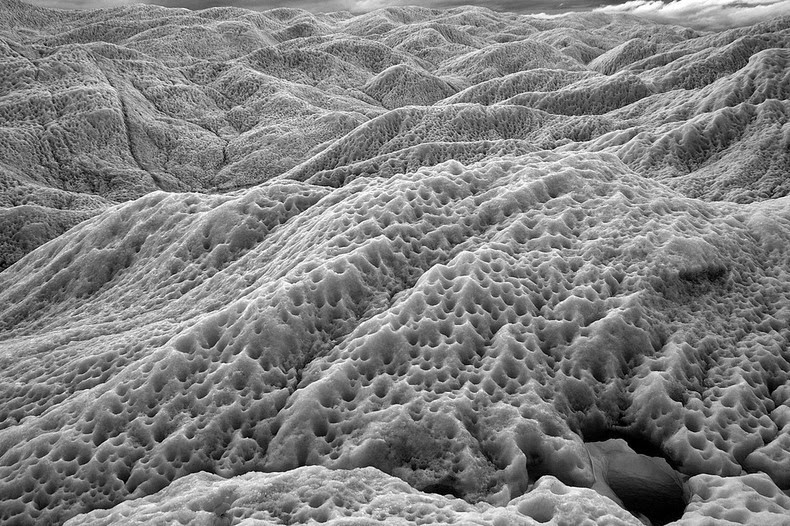Sometimes the surface of glaciers exhibit peculiar water filled cylindrical holes of varying sizes.
At the bottom of these holes, there is usually deposits of dark colored sediments.
The rest is filled with melt water.
These are called cryoconite holes and are formed due to certain powdery windblown dust, called cryoconite.
The name comes from the words cryo which means ice, and conite which means dust.
Cryoconite Holes on Greenland Ice Sheet, Greenland, 10 July, 2008.
Energy produced by these organisms further contribute to the growth of the holes.
In winter, an ice lid can form enclosing the inhabitants with a small amount of liquid water.
When summer returns the lid melts and the colony continues to grow, year upon year.
When the glacier in which the cryoconites have formed begins to melt, the cryoconites melt away and disappear.
They can also appear on sea ice and lake ice.
Canada Glacier, McMurdo Dry Valleys, Antarctica.






